In recent years the Division of Fisheries and Wildlife Habitat Management Grant Program has funded several conservation groups working to restore globally rare sandplain grasslands on Nantucket and Martha’s Vineyard. The program contributed $155,000 for restoration actions in 2019 and 2020 to four organizations part of the Sandplain Grassland Network: Linda Loring Foundation, Nantucket Conservation Foundation, The Nature Conservancy, and The Trustees.
These grants provided critical funds to improve globally rare habitat for rare plant, invertebrate and animal species through reducing the height and density of woody shrub cover, reducing habitat fragmentation and controlling invasive plants. This work also provides important secondary benefits to the public including improved access and visibility for hunters, birdwatchers and the general public, and reducing fuel loads to lower wildfire risk
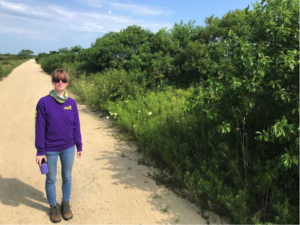
Katama before (left) and after (right) removal of hedgerow.
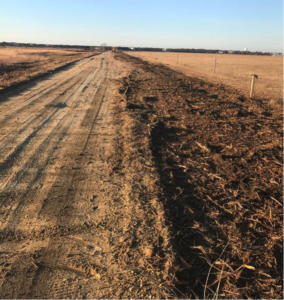
Work Funded in 2019
Katama Airpark & Katama Farm (The Trustees of Reservations/The Nature Conservancy with support from the town of Edgartown)
This grant enabled removal of a 3-acre hedgerow separating Katama Farm and Airpark to reduce fragmentation, removed vegetation on a 6-acre restoration area to start to return it to sandplain grassland/heathland habitat, and also controlled invasive plants. The restoration work benefits Northern Harriers, Grasshopper Sparrows, and a suite of rare plants including Sandplain Blue-eyed Grass.
Long Point Martha’s Vineyard (The Trustees)
Work at this site included over 90 acres of mowing to restore sandplain grassland and a frost bottom habitat to benefit a suite of species including more than 30 rare plants and animals

Shrubland at Nahommon’s Neck in the Long Point Wildlife Refuge on Martha’s Vineyard before spot mowing.
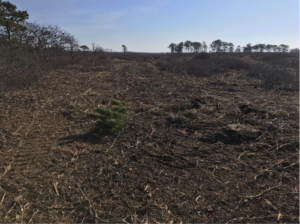
After mowing at Nahommon’s Neck, Long Point.
Head of the Plains (Nantucket Conservation Foundation)
This project conducted brush-cutting and Japanese black pine management within a 37-acre area of sandplain grassland and heathland that has become overgrown with bayberry, northern arrowwood, groundsel, scrub oak and other tall, non-ericaceous shrub species. This grassland has some of the highest concentrations of rare plants in the State.
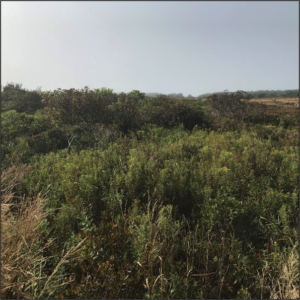
Head of the Plains before brush mowing and Japanese Black Pine removal.

Head of the Plains after brush mowing,
Linda Loring Nature Foundation Wildlife Preserve (Linda Loring Nature Foundation)
Linda Loring Nature Foundation (LLNF) received funding to create and improve sandplain grassland habitats by removing non-native invasive Japanese Black Pine trees. Removing the invasive pines opened up the landscape to the grasslands and native heathlands, reintroducing the landscape to the wind and salt spray which helped shape the landscape originally.
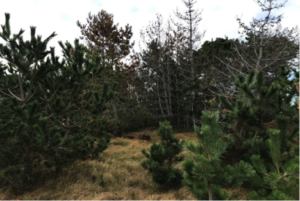
Before (left) and after (right) removal of Japanese black pine at Linda Loring Nature Foundation

Work funded for 2020
- The Nature Conservancy will continue to work on Martha’s Vineyard at Katama Plains under a second Habitat Management Grant that will control vegetation on 6 acres, remove a second hedgerow, and remove other trees/woody vegetation at the adjacent Bamford Preserve. This work will reduce fragmentation at the site and benefit rare bird species such as the Grasshopper Sparrow;
- The Nantucket Conservation Foundation will remove non-native, invasive Japanese black pines within a 2-acre management unit in the Nantucket Conservation Foundation’s Middle Moors property on Nantucket Island, MA. This will improve habitat for a sandplain heathland-associated rare plant, invertebrate and animal species, and eliminate the source of future infestations within adjacent conservation properties in the Middle Moors area.

